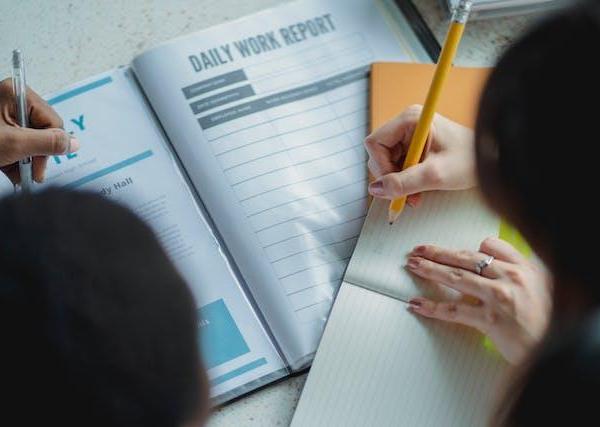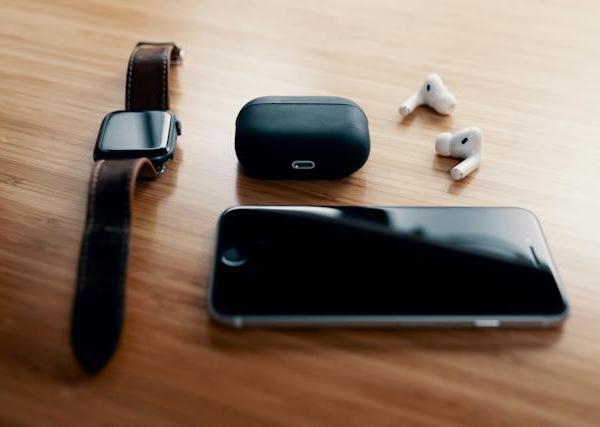Prioritize and Set Clear Goals:
The first step in simplifying your daily routine is to identify your priorities and set clear goals. What activities bring you the most joy and fulfillment? Whether it's spending time with loved ones, pursuing a hobby, or engaging in self-care, understanding your priorities will help you allocate time more effectively.Create a list of your top priorities and set achievable goals related to them. This could include designating specific time slots for family activities, setting aside dedicated hours for personal hobbies, or establishing routines that prioritize your well-being. By clarifying your goals, you'll have a roadmap to guide your daily activities toward what truly matters.
Additionally, consider using tools like planners or mobile apps to organize and visualize your goals, making it easier to stay on track and manage your time efficiently.
Simplify Your Morning Routine:
Mornings set the tone for the rest of the day, and simplifying your morning routine can create a positive ripple effect on the hours that follow. Start by minimizing decision fatigue—lay out your clothes and prepare essentials the night before. Opt for a simplified wardrobe to make outfit choices easier.Streamline your morning activities by creating a routine that includes essential tasks without unnecessary complexities. For example, consider preparing a healthy breakfast that requires minimal preparation or incorporating mindfulness practices like meditation or stretching to set a positive tone for the day.
Limit distractions during the morning by avoiding excessive screen time and focusing on essential tasks. By simplifying your morning routine, you create a calm and organized start to the day, setting the stage for increased productivity and a better work-life balance.
Batch Similar Tasks Together:
Batching similar tasks is a powerful strategy for optimizing time management. Instead of scattering similar activities throughout the day, group them together to create focused blocks of time. This approach minimizes context-switching and enhances overall efficiency.Identify routine tasks that share similarities, such as responding to emails, making phone calls, or running errands. Schedule specific time blocks for these activities, allowing you to tackle them consecutively. Batching tasks not only reduces mental fatigue but also frees up pockets of time for more meaningful and enjoyable pursuits.
Additionally, consider using productivity techniques like the Pomodoro Technique, where you work in focused intervals with short breaks in between. This can help maintain energy levels and prevent burnout, making your daily routine more sustainable and enjoyable.
Delegate and Share Responsibilities:
Recognize that you don't have to do everything on your own. Delegating tasks and sharing responsibilities with family members, friends, or colleagues can significantly lighten your workload. Communicate openly about your priorities and work together to streamline responsibilities.In a family setting, establish a routine for sharing household chores and caregiving responsibilities. Create a sense of shared ownership, where each family member contributes based on their abilities and availability. This not only eases your workload but also fosters a collaborative and supportive environment.
In the workplace, explore opportunities for delegation and teamwork. Effective delegation not only distributes tasks more evenly but also allows individuals to focus on their strengths, contributing to overall efficiency and job satisfaction.
Embrace Technology Wisely:
Leverage technology to simplify and automate routine tasks. Explore apps and tools that can help streamline various aspects of your life, from task management to meal planning. Calendar apps, task management tools, and budgeting apps can all contribute to a more organized and efficient routine.Consider setting up automated reminders for essential activities, such as appointments or deadlines. Utilize online services for grocery shopping, meal delivery, or household chores to save time and reduce the mental load associated with these tasks.
However, be mindful of the potential pitfalls of excessive screen time and information overload. Establish boundaries for technology use to prevent it from becoming a source of stress. Use technology as a tool for simplification rather than allowing it to add unnecessary complexity to your daily life.
Practice Mindful Time Blocking:
Mindful time blocking involves allocating specific time periods for different types of activities throughout the day. Instead of a rigid schedule, this approach allows for flexibility while ensuring that essential tasks and enjoyable activities receive dedicated attention.Begin by categorizing your daily activities into different blocks, such as work-related tasks, personal development, family time, and relaxation. Assign specific time slots for each category, keeping in mind your energy levels and peak productivity periods. For example, if you're most alert in the morning, allocate that time for focused work tasks.
Incorporate breaks into your time blocks to prevent burnout and maintain overall well-being. Use these breaks for short walks, stretching, or relaxation exercises. Mindful time blocking not only enhances productivity by creating focused work periods but also ensures intentional moments for activities you love, fostering a healthier and more balanced daily routine.
Create a Digital Detox Routine:
In the digital age, constant connectivity can contribute to information overload and diminish the quality of our daily routines. Creating a digital detox routine involves intentionally disconnecting from electronic devices for a designated period, allowing for mental rejuvenation and the creation of space for more meaningful activities.Designate specific times in your day or week for a digital detox. This could involve turning off notifications during family dinners, designating a "no-screen" hour before bedtime, or setting aside a weekend day for technology-free activities. Establishing these boundaries can contribute to a healthier balance between online and offline life.
Use the time gained from a digital detox to engage in activities you love, whether it's reading a book, pursuing a hobby, or spending quality time with loved ones. The intentional disconnection from screens not only reduces stress but also fosters a greater appreciation for the present moment.
As you integrate mindful time blocking and incorporate digital detox routines into your daily life, you'll find new opportunities to simplify your routines and create more space for activities that bring joy and fulfillment. These additional strategies complement the earlier tips, providing a holistic approach to optimizing your time and achieving a more balanced and satisfying daily life. Remember that the key lies in consistency and adaptability—making intentional choices each day to prioritize what matters most to you. As you cultivate these habits, you'll discover a renewed sense of control over your time and a deeper connection to the activities that contribute to a fulfilling and well-rounded life.
Simplifying daily routines is not about sacrificing productivity but rather about optimizing your time to create space for the activities that bring joy and fulfillment. By setting clear priorities, streamlining morning routines, batching tasks, delegating responsibilities, and embracing technology wisely, you can cultivate a more balanced and enjoyable daily life. Remember that the goal is not perfection but progress—small, intentional changes can lead to a significant impact on your overall well-being and the time available for the activities you love. As you implement these tips, observe the positive shifts in your daily rhythm and relish the newfound freedom to engage in the pursuits that truly matter to you.



